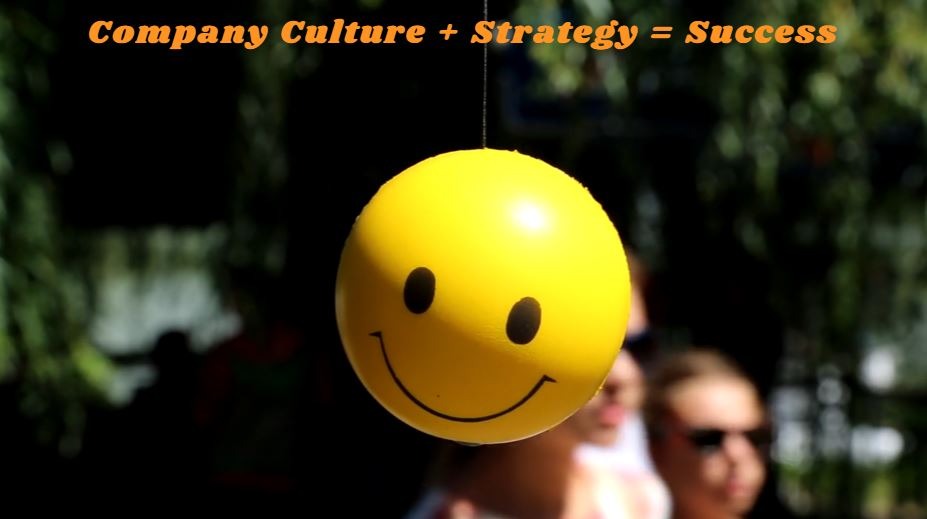The Power of Culture: Why Caring Companies Win
Discover how companies like Barry-Wehmiller, Southwest Airlines, Patagonia, SevenRooms, and CVS Caremark prove that a people-first culture, combined with strong strategy, leads to lasting success. Their stories show that when businesses truly care for their people, they not only thrive financially but also create unforgettable experiences.
COMPANY CULTURE
Michel eganya
9/28/202510 min read


Culture: the silent operating system of performance
When we talk about the success of a company, strategy and innovation often take center stage. But behind the numbers and business models lies something less visible and infinitely more powerful: culture—the shared beliefs, behaviors, and rituals that determine how people actually make decisions when no one is watching.
Strategy tells you what to do; culture decides how it gets done and how it feels along the way. A compelling slide deck can point in the right direction; only culture can turn direction into momentum. That is why the organizations that endure aren’t merely clever—they are consistently human: they care for their people, act with integrity, and align that care with a coherent strategy. The result is a compound advantage:
higher trust→ better collaboration → faster learning → better service → stronger economics.
How culture creates measurable results
Psychological safety → better decisions. When people feel safe to speak up, risks surface sooner and ideas improve faster. Fewer hidden problems, fewer costly surprises.
Dignity at work → lower churn. Respectful leadership reduces turnover and preserves institutional knowledge—the most under-valued asset on the balance sheet.
Clarity + autonomy → speed. Clear guardrails with local decision rights shrink response times and elevate guest experiences at the moments that matter.
Service profit chain → flywheel. Valued employees create delighted customers; delighted customers return and refer; returns and referrals fund reinvestment in people.
Turning values into practice (what great cultures do)
Codified behaviors. Translate values into 5–7 observable behaviors (e.g., “listen first,” “own the outcome,” “leave places better than you found them”).
Rituals that reinforce. Daily huddles, gratitude rounds, post-stay story shares—small, repeated moments that make the culture tangible.
Decision guardrails. Simple rules like: “If it’s safe, legal, and serves the guest without harming our people or the planet—say yes.”
Care in the hard moments. Fair scheduling, crisis funds, transparent pay bands, and coaching—care that shows up especially when it’s inconvenient.
Metrics that matter. Track eNPS (employee), gNPS (guest), retention, service recovery time, and referral rate alongside RevPAR and EBITDA. What gets measured gets protected.
Why this matters in hospitality
In hospitality, culture is not an internal HR topic—it’s the guest experience amplifier. What team members feel at work is exactly what guests feel in stay. A culture that treats its people with dignity produces the kind of micro-choices—warm welcomes, proactive fixes, authentic storytelling—that guests remember for years. Those memories translate into repeat visits, premium pricing tolerance, and organic advocacy that no ad budget can buy.
Let us look at some examples of organizations that have made culture their compass—and reaped extraordinary results.
Barry-Wehmiller: Truly Human Leadership
What makes Barry-Wehmiller different is not a slogan—it’s a system. “Truly Human Leadership” shows up as repeatable behaviors, leadership training, and decision rules that protect people in good times and hard times.
1) Behaviors that are taught, not assumed.
Leaders are trained to listen first (not performatively, but with structured listening skills), to ask better questions, and to recognize people publicly and specifically. New managers go through internal programs (often described as a “leadership university”) where the curriculum centers on communication, empathy, and stewardship—not just finance or operations. The message is clear: your job is to build people, and through people, the business.
2) Ritualized recognition and storytelling.
Recognition isn’t a quarterly slide—it is woven into the cadence of work. Managers write notes, spotlight wins in daily huddles, and invite teams to share “moments that mattered.” These small, frequent rituals create a climate where dignity is normal and initiative is noticed. Over time, that becomes a flywheel for creativity and problem-solving.
3) Guardrails for hard moments.
During severe downturns, the company famously chose shared sacrifice over layoffs (e.g., rotating unpaid time off) so that no single family carried the full burden. This kind of decision cements trust for decades; people remember how you act when it’s costly. It also preserves know-how, so the organization rebounds faster when demand returns.
4) Metrics that protect the mission.
Performance isn’t measured instead of humanity; it’s measured alongside it. Yes, they track revenue, margins, and quality—but they also watch engagement, retention, and safety. When a plant improves a “human” metric, leaders treat it as a real business win, because it reduces churn, strengthens teams, and improves customer outcomes.
5) Scalable through acquisition.
Barry-Wehmiller grew by bringing dozens of companies into a shared culture. The playbook wasn’t “install our org chart”; it was teach our leadership behaviors, elevate local pride, and give people a purpose worth caring about. That approach made integration smoother and performance more resilient across geographies.
What this means for hospitality
Train the behaviors. Don’t hope for warm service—teach it. Create a simple curriculum for leaders and guest-facing teams: listen first, anticipate needs, close the loop.
Make care visible. Daily stand-ups with a guest story; handwritten thank-yous; peer-to-peer recognition. Small, frequent, specific.
Decide with dignity. Write down the rule you’ll follow in tough seasons (e.g., hours-sharing before layoffs). When the storm hits, you already know who you are.
Measure what you want to multiply. Track eNPS, retention, service recovery time, and referrals alongside RevPAR and EBITDA. Share these dashboards; celebrate people metrics in the same breath as financial ones.
The lesson is simple and powerful: culture is a system you build on purpose. Barry-Wehmiller proved that when you operationalize care—teaching it, measuring it, and protecting it—people bring their whole selves to work. In hospitality, that translates directly into the guest moments that become memories—and memories are the most reliable engine of loyalty and growth you’ll ever have.
Southwest Airlines: Culture at 35,000 Feet
Southwest Airlines has long been studied not only as a low-cost pioneer but as a culture company that happens to fly planes. From the beginning, its founders made a bold bet: if employees are free to bring their whole personality to work, they will deliver service money can’t buy. That’s why flight attendants are encouraged to use humor in safety briefings, pilots often greet passengers personally, and gate agents have license to solve problems creatively.
1) Codifying freedom into policy.
Southwest built policies that protect employee judgment. Staff don’t need to run every exception up the chain—they are trusted to act in the guest’s best interest, as long as safety is not compromised. That autonomy turns employees into hosts rather than functionaries, and it creates thousands of micro-moments that delight passengers.
2) The culture contract.
Southwest calls employees its “warrior spirit, servant’s heart, fun-loving attitude.” These aren’t posters on the wall—they are hiring criteria, coaching language, and recognition themes. By anchoring culture in everyday processes, Southwest ensures consistency without crushing individuality.
3) Culture as shock absorber.
The airline industry is cyclical, with fuel price spikes, labor disputes, and recessions. Where rivals often collapsed into layoffs and strikes, Southwest’s loyalty—internal and external—acted as a buffer. Employees pulled together, customers forgave small missteps, and investors trusted leadership. That resilience is what turned a scrappy regional airline into the most consistently profitable U.S. carrier.
Lessons for hospitality
Empower the front line. Train, yes—but also trust. Give team members decision rights to surprise and delight guests in the moment.
Make values practical. Define 3–4 traits you hire for, coach to, and celebrate. This keeps culture alive in daily work, not just onboarding slides.
Design for joy. Don’t confuse efficiency with sterility. Build small rituals of fun and humanity that make every stay or service interaction memorable.
Southwest’s story proves that profitability can grow out of joy. In hospitality, where every guest interaction shapes reputation, an empowered and joyful team is not a soft asset—it’s a decisive competitive advantage.
Patagonia: Earth as the Only Shareholder
Patagonia is more than an outdoor apparel company—it is a cultural institution built on conviction. When founder Yvon Chouinard announced that “Earth is now our only shareholder,” the world paid attention. But this bold transfer of ownership was not an isolated act; it was the culmination of decades of choices that consistently aligned business with purpose.
1) Embedding care into daily life.
Long before sustainability became mainstream, Patagonia offered employees on-site childcare, flexible work arrangements, and paid time off to volunteer with environmental NGOs. These weren’t perks—they were proof that the company cared about the whole human being, not just the worker. That care translated into extraordinary retention and loyalty, which in turn reduced costs and preserved culture even as the company scaled globally.
2) Activism as brand engine.
Patagonia has repeatedly taken political and legal stands—suing the U.S. government to protect national monuments, running campaigns urging consumers to “Don’t Buy This Jacket,” and dedicating 1% of revenue to the planet. Far from hurting sales, these decisions deepened trust. Customers don’t just wear Patagonia; they belong to Patagonia’s mission. Every product becomes a badge of shared values.
3) Purpose as growth flywheel.
By consistently prioritizing planet and people, Patagonia positioned itself as the most trusted voice in outdoor apparel. That trust translates into pricing power, customer advocacy, and resilience in downturns. Competitors spend billions chasing brand loyalty; Patagonia earns it by acting with integrity.
Lessons for hospitality
Show conviction in hard choices. Identify what you will not compromise on (e.g., zero-carbon energy, dignified labor, local sourcing) and make it visible.
Turn activism into loyalty. Guests increasingly choose brands that mirror their values. Take public stands that align with your mission.
Design culture as brand. Treat employee well-being not as HR policy but as the DNA of your guest promise. The care staff feel is the care guests will remember.
Patagonia demonstrates that acting with integrity is not charity—it is strategy. In hospitality, leading with conviction and care ensures that every stay tells a story guests want to share, and every guest becomes an ambassador for the brand.
SevenRooms: Hospitality Reinvented
SevenRooms, a hospitality technology platform, has grown rapidly in a sector often defined by long hours, high stress, and relentless competition. What makes it stand out is not just its software but its culture by design: the company made an early choice to put empathy and well-being at the core of its growth.
1) Empathy as operating principle.
Unlike many startups that burn out their teams in the name of speed, SevenRooms created structures that protect people. Mental health is openly discussed, leaders prioritize transparency, and feedback is encouraged at every level. This has created psychological safety—rare in fast-scaling tech—that unlocks innovation and commitment.
2) Culture shaping product.
SevenRooms builds tools for restaurants, hotels, and venues to understand and anticipate guest needs. That focus on caring for the guest is a direct reflection of how the company treats its own employees. The empathy built into its culture flows naturally into its software, giving operators insights that enable personalized service and stronger guest loyalty.
3) Growth through values.
By aligning employee well-being with customer success, SevenRooms avoids the cultural debt that cripples many startups. Instead, it has built a sustainable growth path, with both employees and clients becoming advocates. In hospitality, where relationships are everything, this people-first model is a competitive advantage.
Lessons for hospitality
Build empathy into systems. Create structures—surveys, open forums, wellness programs—that make care practical, not aspirational.
Reflect culture in the guest journey. The way you treat staff shapes the way they treat guests. Culture is the hidden UX of hospitality.
Prioritize sustainable growth. Don’t chase scale at the expense of people. A loyal, energized team will outperform a burned-out one every time.
SevenRooms proves that a culture designed with empathy at its core can scale without breaking. For hospitality companies, the lesson is clear: when employees feel valued and empowered, they create guest experiences that feel unforgettable.
CVS Caremark: A Bold Cultural Stand
In 2014, CVS Caremark made a decision that stunned both Wall Street and Main Street: it stopped selling tobacco products, walking away from nearly $2 billion in annual revenue. To many, this looked like a reckless business move. But for CVS, the decision was a cultural alignment. A company that positions itself as a healthcare leader cannot simultaneously profit from products that harm health.
1) Walking the talk.
The choice to remove tobacco wasn’t just symbolic. It required rethinking store layouts, retraining staff, and absorbing a real financial hit. Yet by acting consistently with its mission, CVS transformed its image from a convenience retailer into a credible healthcare partner. Customers and regulators alike saw a company willing to sacrifice revenue for integrity.
2) Trust as currency.
This bold step built a reservoir of trust with consumers, employees, and investors. CVS leveraged that trust to expand into in-store clinics, pharmacy services, and partnerships with healthcare providers. What started as a cultural stand became a growth strategy. By proving its values in action, CVS differentiated itself in a crowded market.
3) Culture as long-term hedge.
While competitors fought for short-term sales, CVS invested in credibility and purpose. Today, it is recognized not just as a retailer but as a healthcare company. That rebrand would have been impossible without the cultural courage to act against immediate financial gain.
Lessons for hospitality
Choose values over easy revenue. Say no to practices that undermine your mission, even if they look profitable in the short run.
Build trust through hard choices. Guests and partners remember when you take a stand—and that memory becomes loyalty.
Turn culture into positioning. In a crowded industry, integrity is the most distinctive brand asset you can own.
CVS Caremark’s story shows that culture is tested in the tough calls. By aligning action with mission, it not only strengthened its reputation but also opened doors to new opportunities. In hospitality, making courageous cultural choices builds the kind of trust that money cannot buy—and that trust is what guests carry home as part of their experience.
Culture as the Hidden Engine of Success
From Barry-Wehmiller’s “Truly Human Leadership” to Southwest’s joyful empowerment, from Patagonia’s conviction to SevenRooms’ empathy and CVS Caremark’s integrity, the lesson is unmistakable: culture is not decoration; it is strategy.
These companies thrived because they cared for their people and acted consistently with their values. That care created loyalty, trust, and experiences so authentic that customers became advocates, employees became stewards, and profits became the natural outcome rather than the sole objective.
For us in hospitality, the parallel is clear. Guests will remember the design, the food, the landscape—but what will truly stay with them is how they felt. When our people are empowered, cared for, and aligned with a human-first culture, every interaction becomes a story worth carrying home.
And it is those stories—shared around dinner tables, told to friends, passed on through generations—that build legacies. Culture is what turns a stay into a memory, and a company into a movement. That is why, in the end, our greatest competitive advantage will not be IT, marketing, or even price. It will be the invisible thread of culture woven through every experience.
Sources
Barry-Wehmiller case studies and Bob Chapman’s “Everybody Matters”
Southwest Airlines culture and business performance reports
Patagonia company announcements and sustainability reports
SevenRooms company culture insights and hospitality tech case studies
CVS Caremark corporate announcements and healthcare industry analysis


Show us your support by Buying us a coffee here:
© 2025. All rights reserved, EIR Resorts


Follow us on:
EIR is a regenerative hospitality brand built around people, nature and long-term stewardship.
We build slowly, with care and intention.
Explore
